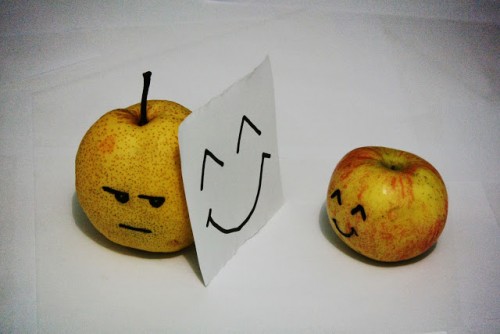“You are what you eat.”
How often have we heard this phrase in regard to health, nutrition and wellness?
We read it in books. We hear it on TV. Maybe our own mothers remind us of this from time to time, too.
It might even make sense to us, on some level. And yet, what in the world does this phrase really mean, and how do we start to actually eat what we want to be?
Ayurveda, the ancient sister science of Yoga, holds the answers to this question and teaches us three potent ways that food can profoundly impact our mood.
What is Ayurveda?
The word “Ayurveda” stems from “ayur,” which means “life,” and “Veda,” which means “knowledge” or “the study of.” So, Ayurveda is the study or knowledge of life. A complete medical system from India, believed to be revealed to the ancient Rishis (sages or seers), Ayurveda addresses every aspect of human life, ranging from digestive disorders to romantic relationships.
One of Ayurveda’s many incredible contributions to the world is an amazing branch called Svasthavritta, which teaches people how to preserve and protect our existing health, and to actively prevent disease. In Ayurveda, the term for health is “Svasthaha.” The word “Sva” means “higher Self,” and “Sthaha” signifies “to be established in.” Ayurveda is a truly hope-filled medicine, which holds the beautiful conviction that the nature of our true Self is Svastha—our health.
Understanding the Three Qualities Permeating the Universe
To learn how to eat in a way that will make us truly healthy, we must first understand three gunas, or qualities, that permeate the entire universe and how they contribute to creating our health and ill health at all levels: physical, mental, emotional, psychological and spiritual. These three gunas comprise the basis of Ayurveda psychology.
Tamas: Cloaking Us in Darkness, Depression & Denial
One of the qualities that Ayurveda psychology teaches about is Tamas, which can be thought of as being like a dark cloak that covers us completely. When we have a lot of Tamas in our mind and body, we feel very heavy, lethargic and depressed. Tamas is the awful feeling of confusion that tears away at our heart and soul, causing us not to know what to do, where to go, how to be or who we really are.
As someone who spent a lot of my younger life in the mode of Tamas, I can speak from experience in saying that this is not a place we want to be! Tamas is the manifestation of the mind traps we so often create for ourselves, the suffering we unconsciously get attached to, even though we may know that there must be another way. Tamas is that state in which we delude ourselves and others, doubt everything and sometimes even feel like dissolving completely into a different state.
Thus, Tamas easily gives way to addictions of all kinds.
Some Tamas, however, is necessary for us to rest and especially to sleep properly at night. It is not all bad. We just want to avoid allowing Tamas to build up too much.
When we have excess Tamas in our mind, we easily get drawn to eating foods that are Tamasic in nature. Conversely, when we eat very Tamas-dominant foods, our minds also become cloaked in Tamas. Foods that are considered Tamasic include those that are decaying, stale, dull, heavy, leftover, processed, etc.
Examples of Tamasic foods that we want to avoid, or at least eat less frequently, include mushrooms, cheese, beef, pork and canned and frozen foods.
Rajas: Activating Passion
The second quality Ayurveda psychology teaches about is called Rajas. Whereas Tamas governs inertia, Rajas is on the opposite end of the spectrum—it is all about action, passion and motion. We need a healthy amount of Rajas to counteract the heaviness of Tamas. Rajas is necessary to achieve any goal. We also need this quality to wake up in the morning.
Excess Rajas, however, can manifest as anger and other heated emotions such as jealousy, hatred, aggression, manipulation and violence. My Ayurveda teacher explains how the salient characteristics of Rajas are “hurry and worry. People with a lot of Rajas are like steamrollers, rolling relentlessly over any obstacle in their way.”
When I experience excess Rajas in my mind, I find that I can achieve any goal I set for myself, but often end up feeling depleted, empty and ultimately unfulfilled once I’ve accomplished what I wanted. This shows how Rajas and Tamas are connected; the passion to achieve is a hallmark of Rajas. And the feeling of emptiness after a goal is achieved is a salient feature of Tamas. When Rajas dominates my mind, I also feel myself being more at odds with others, rather than cooperating and getting along.
Too much Rajas can also cause us to lie, cheat, experience anxiety, restlessness, discontentment, judgmental attitudes and fanaticism.
The foods that we are drawn to when Rajas is dominant are those that are very spicy, salty and sweet, such as junk food, chips, green and red chilies, wasabi and candy bars.
Sattva: Inspiring Health, Harmony & Happiness
The third and final quality of Ayurveda psychology is called Sattva, which comes from the root word “Sat,” meaning truth. We are all searching for Sattva, because this quality represents who we are, at our deepest essence. The Sattva quality is synonymous with inner peace, happiness, purity, harmony and balance. It is the feeling we have when we experience compassion and true love (versus lust, which is a more body, rather than heart-based attraction—and therefore considered more Rajasic).
Cultivating Sattva is the key to obtaining—and sustaining—great health.
Sattvic foods are fresh, light, easily digestible and full of prana (life force). Ripe fruits, nuts, ghee (clarified butter), cardamom, raisins, cooked vegetables and cow’s milk from well-treated cows are all considered Sattvic in both Ayurveda and Yoga.
When I first began eating more Sattvic foods, I noticed how my mind immediately began to feel much calmer. I could more easily experience clarity and inner peace. Eating Sattvic foods was truly the first step of cultivating a more harmonious and happy relationship with myself, first and foremost, and thereby finding more harmony in all my other relationships. I began to feel more creative and inspired, like I could really tap into a deeper part of myself in Yoga and meditation practice than I ever could before.
I now rarely experience any cravings for food, and in fact feel a much greater sense of my own fullness overall.
Eating Sattvic foods has been an amazing way to tap into the inner freedom I used to seek through external means. Cultivating Sattva through my diet has provided me a way to not only feel fuller, but to remain full, to give from an inner space of fullness, which ensures I do not get depleted when in giving.
Committing to eating a Sattvic diet has become one of the most important, tangible ways I have learned to love and take care of myself. As a healer, it has been very rewarding to see the increase in my clients’ health and happiness as they, too, start to shift towards a more Sattvic way of eating.
Try minimizing your consumption of Tamas and Rajas-inducing foods, increase your intake of Sattvic foods, and you, too, can start to become as healthy and free as you were always meant to be.
Bon appetit!
Love elephant and want to go steady?
Sign up for our (curated) daily and weekly newsletters!
Editor: Emily Bartran
Photo: Pixoto













Read 2 comments and reply